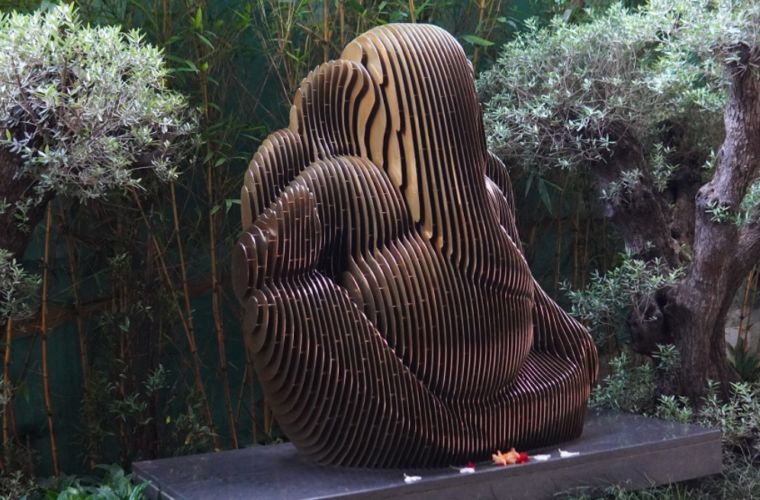Beehive by Coolant, Ant Studio
Ar. Monish Siripurapu,
Founder & Principal Architect,
Ant Studio, Noida
Temperatures during the day day are high during the Indian summers, and installing big airconditioning systems is energy-inefficient and uneconomical for much of the population. One requires an inexpensive and sustainable alternative, and the firm devised a new cooling prototype that utilizes traditional methods and local materials to counter the hot Indian summers during the day. Ar. Monish Siripurapu, Founder, Ant Studio says, “As an architect, I wanted to find a solution that is ecological and artistic, and at the same time evolves traditional craft methods.”
Evaporative cooling is an ancient Indian technique that cools the surroundings by reducing the temperature using water and local materials and traces back to the havelis, forts, and the Egyptian period. The design is inspired by the structure of a beehive and uses environment-friendly materials to construct aesthetic art pieces that are visually appealing and functional at the same time.
Earthen cones and terracotta tiles are used to create the prototype and the design and size of the components are customized through advanced computational analysis and modern calibration techniques. The prototype’s thickness and the length of the material are modified with CFD analysis.
The use of cylindrical cones and terracotta modules provides for a larger surface area to maximize the cooling effect. The temperature of the hot air entering the installation and water is allowed to run on the surface of the cylinders, which cools the hot air passing through the earthen pots. After achieving the cooling effect, the temperature around the setup drops down and achieves thermal comfort for the occupants. Water can be allowed to run over the prototype once or twice a day for effective cooling.
This system requires minimal electricity (for the water pump). The water requirement is also minimal since the water is circulated and pumped over and over again when the installation is in use. The water tank can be topped up monthly, or as per the capacity of the tank, but no regular topping up is required.
The installation can also be converted into a zero-energy prototype that requires manual pouring of water over the pots once or twice a day, which can be done in areas where there is a shortage of power supply, but it is not an ideal solution. It is a scalable module that can be adapted to different climatic conditions as well; as it uses earth which is biodegradable and steel is recyclable and reusable.
The prototype is also aesthetically pleasing and can be customized as an Art Installation as per requirements. Pottery and terracotta products being a widely practiced crafts in India, this cooling solution can also help generate employment and reinforce a sustainable income source for potters.








